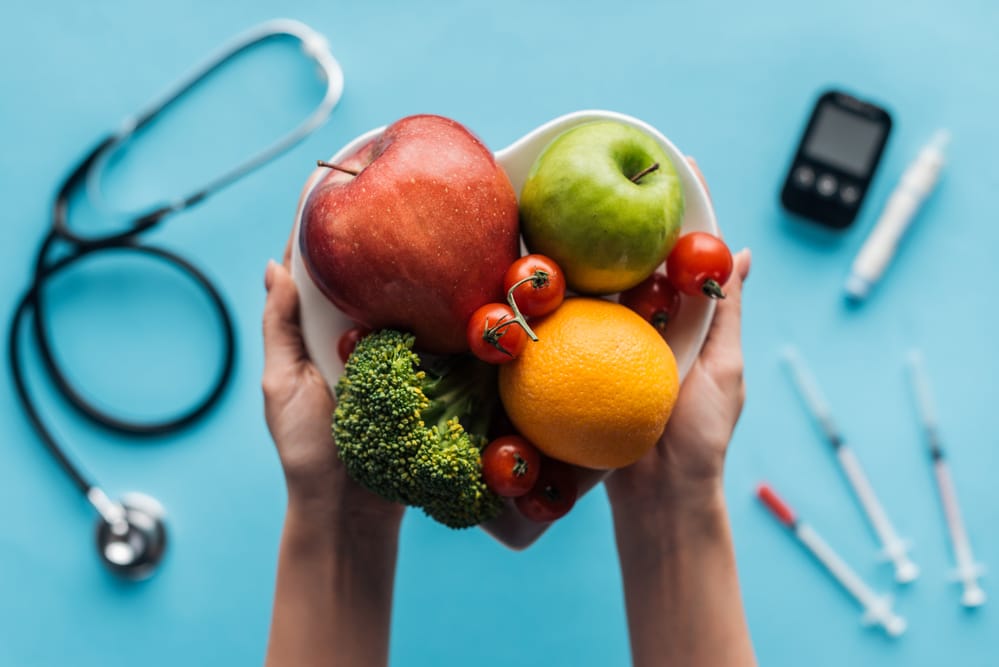By Andrew J Allen, DC
As Valentine’s Day approaches and we are making plans to show our loved ones how much they mean to us, we need to consider those individuals in our lives who suffer from diabetes. These plans often involve food, drink and sugary treats, all of which can cause great fluctuations in an individual’s blood sugar. So, what can we do for these special people in our lives that is not detrimental for their health?
There are a few immediate considerations when giving these carbohydrate laden products to loved ones with diabetes. The first thing to consider is the type of carbohydrate in the foods, followed by the amount of carbohydrates in each food. Lastly, there may be times it’s necessary to find a reasonable replacement when the first two considerations eliminate a food choice as an option.
Carbohydrates are found in three forms; starch, sugar and fiber. The starch and sugar type will impact a diabetic’s blood sugar levels significantly, known as the Glycemic Index (GI) of a food. The GI of a food ranges from 0-100, where zero has no effect on a diabetic’s blood sugar and 100 means that the food will cause a major increase in the person’s blood sugar, and consequently, their insulin levels. So, when many foods and treats such as candy, cookies and pastries contain significant starch and processed sugar, giving them a high GI ranking, it’s important to shift to another more acceptable food choice that has a lower GI ranking.
How to Choose Low GI Foods
Choosing treats for a diabetic based upon GI ranking does not mean the items need to be devoid of sugar. Instead, consider the amount of sugar in the food. A GI index ranking of 55 or lower is a good number to target. Alternative options consist of those that avoid processed sugars, including certain fruits and dark chocolate with 60%-70% cacao or treats that use alternative sweeteners such as stevia. These are good options because they have a GI of 0 but caution should be used because these types of sweeteners can cause gastrointestinal upset. To better understand a food’s GI rank, download a smart phone app or look up the GI ranking of the food online.
Alternative Valentine’s Day Gifts
When seeking alternatives to high sugar treats and candy, consider fresh fruit combinations such as pears and cheese, apples with natural peanut butter, and strawberries dipped in dark chocolate or with low-sugar whipped cream. Other fruits to consider are peaches, plums, cantaloupe, and cherries. Dark chocolate covered almonds or cashews are also wonderful options. Alcohol in small quantities is also acceptable. As with all food choices, food sensitivities, allergies and their interaction with medications must be considered.
Please note that the above suggestions are not intended to be diet modifications for an individual with diabetes. The best recommendation for a comprehensive diet plan is that it be individualized and an assessment is completed by a dietician or their primary care physician.
About Dr. Allen
Andrew J Allen, DC, is the Director of Clinical Management, at Restore Osteo of Colorado, an integrated health care practice located in Golden, Colorado. He specializes in chiropractic care, occupational injury management, and musculoskeletal & sports injury rehabilitation. Dr. Allen has been practicing chiropractic for over 18 years, primarily in the realms of med-legal and sports medicine. In that time, he has owned two successful practices in Northern California. In an effort to share his expertise with others, Dr. Allen has taught for 11 years as a college anatomy and physiology professor for undergraduate and doctoral level students.
Senior Outlook Today is your go-to source for information, inspiration, and connection as you navigate the later years of life. Our team of experts and writers is dedicated to providing relevant and engaging content for seniors, covering topics such as health and wellness, finances, technology and travel.






